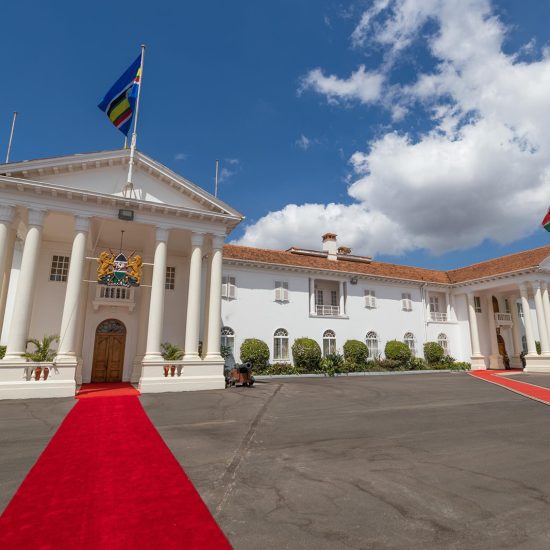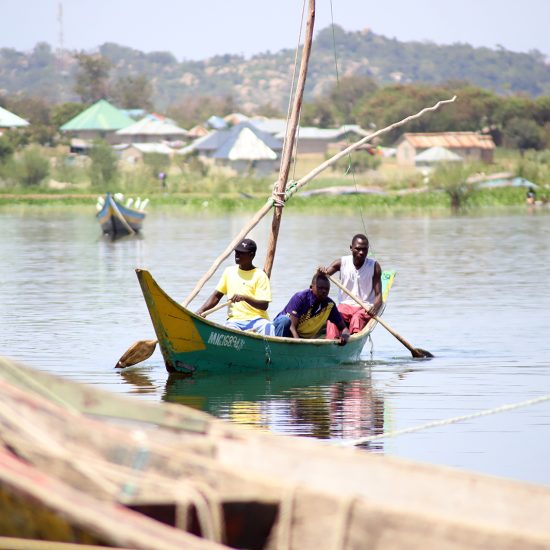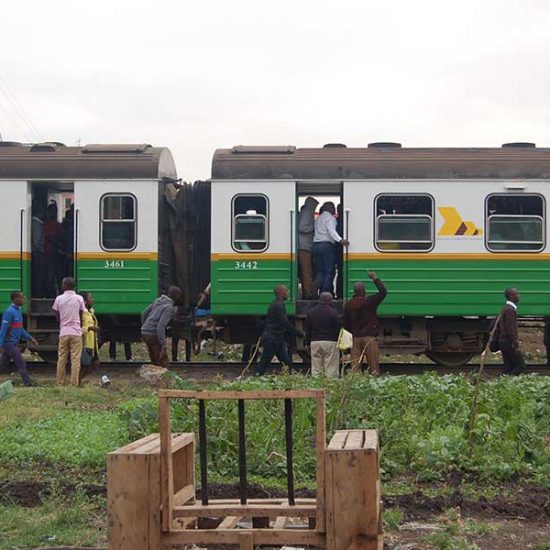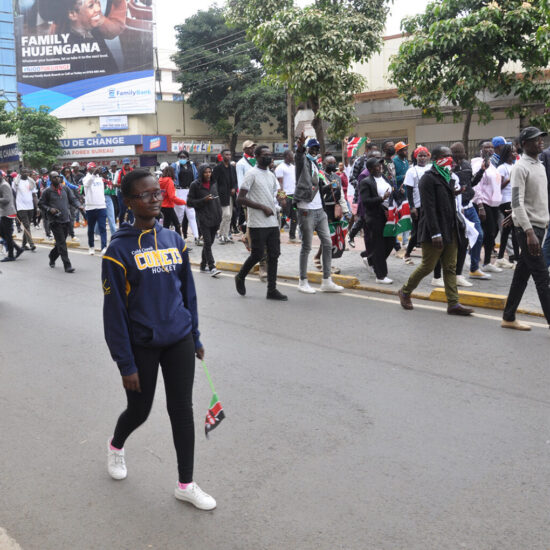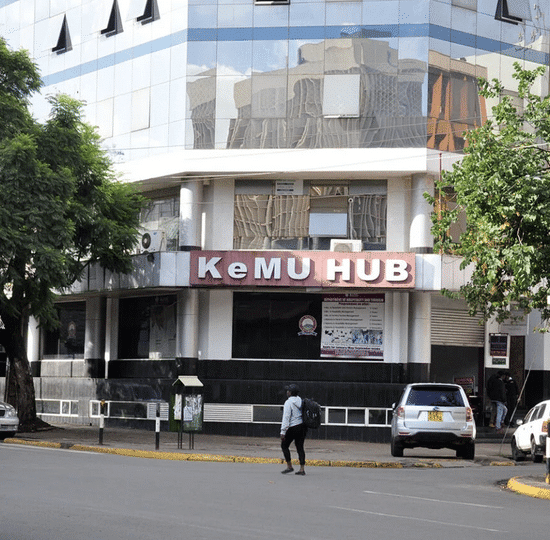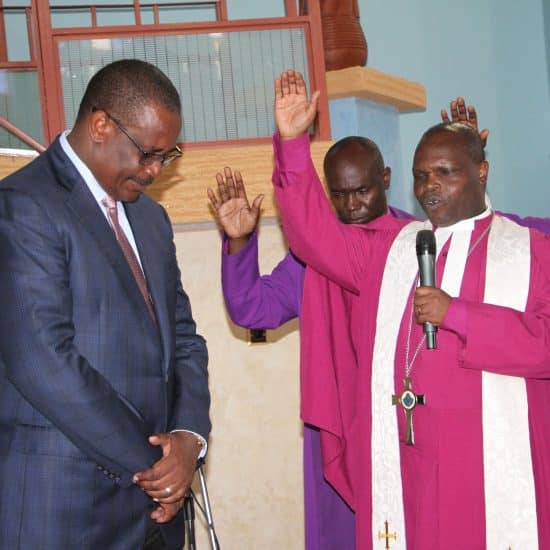NAIROBI, Kenya (RNS) As she drives her family’s donkeys to a new borehole at the base of the Uuni Hills in eastern Kenya, Eunice Wambua says the water it provides is much cleaner than what she used to get from a dam several miles away.
“It was dirty water and we believed it colored our teeth brown,” she recalled.
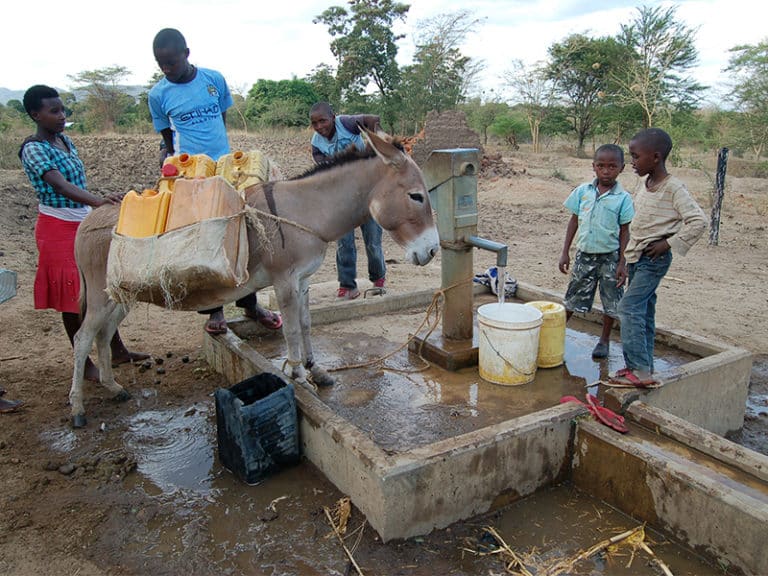 Eunice Wambua, left, and Joel Kimeu wait for cans to fill at a well near Mango, Kenya, on March 17, 2017. Wambua says life is much easier for her since the drilling of the well. RNS photo by Fredrick NzwiliWambua, 17, used to have to skip church services to walk to the dam, where in the dry season, many from her village would scoop the sand on a nearby riverbed to get water because the level had dropped so much.
Eunice Wambua, left, and Joel Kimeu wait for cans to fill at a well near Mango, Kenya, on March 17, 2017. Wambua says life is much easier for her since the drilling of the well. RNS photo by Fredrick NzwiliWambua, 17, used to have to skip church services to walk to the dam, where in the dry season, many from her village would scoop the sand on a nearby riverbed to get water because the level had dropped so much.
The borehole, which community leaders said was drilled with help from World Vision, also helped her recover part of her life.
“This water is clean. It’s a blessing,” she said. “Now I have more time for schoolwork and church activities.”
On a continent where people spend long hours trekking and queuing for water that is not always clean, such projects, initiated by church groups and NGOs, improve the livelihoods of women and children.
But they don’t solve the problem of water shortages, and amid drought conditions the aquifers that the boreholes tap are also under threat.
The World Health Organization has designated March 22 as World Water Day. The U.N. agency estimates that there are more than 663 million people “living without a safe water supply close to home, spending countless hours queuing or trekking to distant sources, and coping with the health impacts of using contaminated water.”
This year’s theme is “Why waste water?,” with an emphasis on reducing, treating and reusing wastewater.
The drought in the Sahel — a region that forms a dry belt across northern Africa — has left millions without any water to drink and is being linked to three deaths in recent days in Kenya due to consumption of unsafe water.
“There are no drops to reduce, recycle or reuse,” said professor Jesse Mugambi of the University of Nairobi, who added that many in the region are spending World Water Day “praying for drops of rain to quench their thirst and that of their livestock.”
In Machakos, a county about 40 miles southeast of Nairobi, Anglican Bishop Joseph Mutie Kanuku said people in his diocese walk as many as 10 miles or more to find water.
“The people — many women and children — are suffering serious shortages. The journey they take also slows down development and church work,” he said.
Evangelical pastor Mutua Munyaka of the nearby Kavunyu Africa Inland Church said his church can only do so much.
“We have drilled boreholes, built community dams and surface dams across streams, but still the demand is much higher,” Kanuku said. “The church’s help can go far, but the government must shoulder the bigger responsibility.”
Kanuku blamed climate change for much of the problem and said more trees and sand dams are needed to keep water from flowing out to the Indian Ocean.
He fears that drilling more boreholes — a common practice at the moment — will worsen the water crisis in regions.
“By drilling, we are not adding water to the ground. Within a few years, the water table will sink further,” he said.
(Fredrick Nzwili is an RNS correspondent based in Nairobi)

